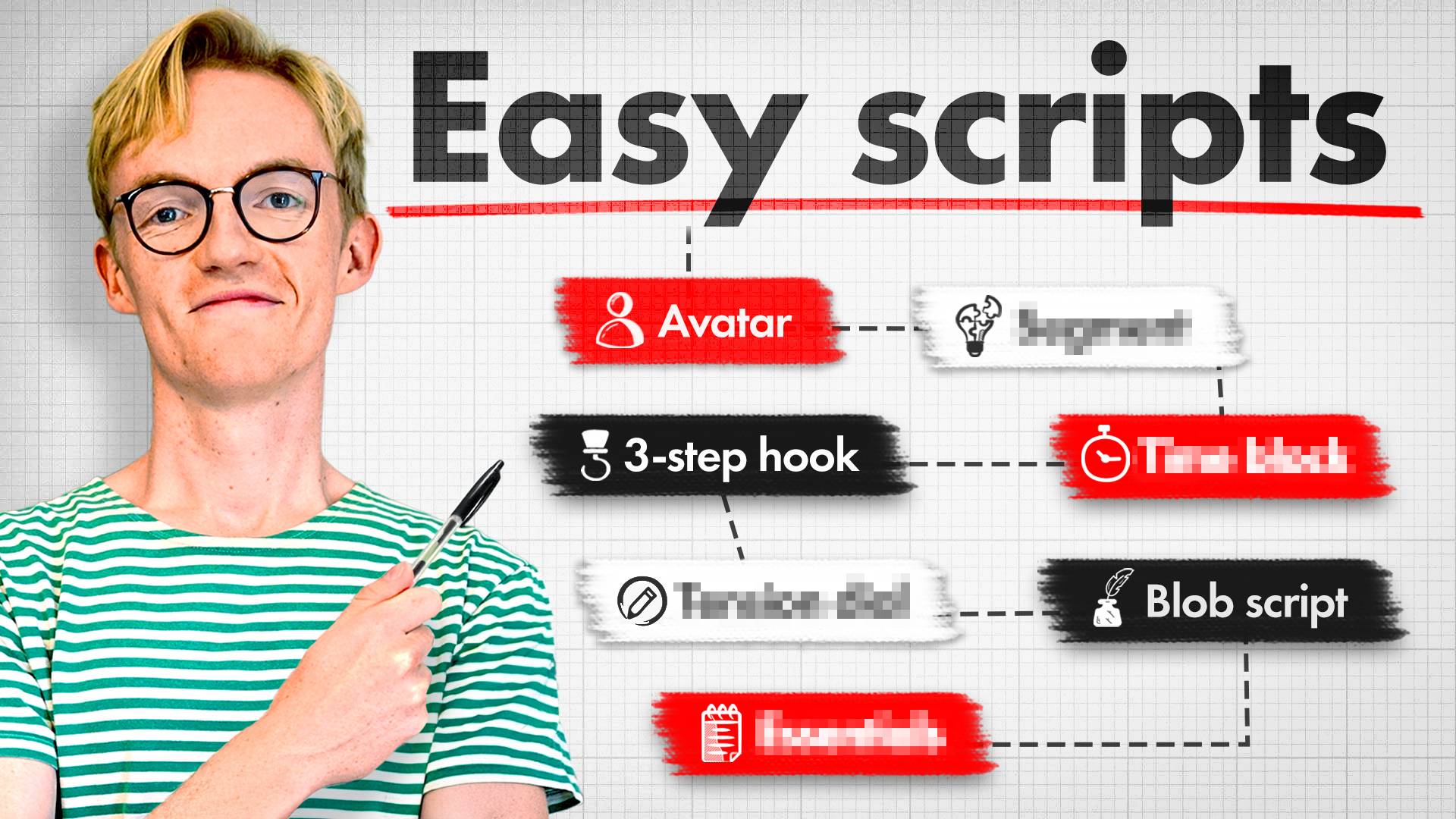The hook mistake made by 100k+ channels
October 17th, 2025
|
10
min read
Today, I've got something essential to keep in mind when writing your next hook.
Specifically, if your hook ends with a "rule of three".
A rule of three usually appears at the end of a hook and sounds like this:
"So in this video, we're going to cover:
- [Topic 1]
- [Topic 2]
- And [topic 3]"
Having a video that answers multiple questions like this is great because:
- We can really sell the amount of value in our video.
- We can set up the video's structure, which is essential to keeping the viewer oriented and engaged later.
But here's the problem:
The choice of which three things you mention is more important than you'd think.
It's not as simple as choosing "the most interesting three topics from the video".
And I've seen channels with 100k+ subscribers get this wrong (and their retention has suffered because of it).
For example, let's imagine a video called "Best laptop for small businesses in 2025".
In the past, I've seen channels who made the mistake of writing something like this at the end of their hook:
"So in this video, we're going to cover:
- The huge problem with Sony laptops in 2025.
- The unexpected realities of Apple's new M5 chips.
- And which laptop is right for small business owners in 2025."
But... why is this a problem?
All three bullet points sound exciting and, more importantly, relevant to the topic.
But here's the issue:
While it might feel like a good idea to pick the three most exciting topics from your video and mention those at the end of your hook, this can actually disrupt the viewer’s sense of the video’s structure.
(And, remember, structure is key to retention - and setting up that structure in the hook is essential.)
By putting three equally important topics side-by-side, it makes it more difficult for the viewer to latch on to the primary question.
The primary question is the reason they clicked - and it's probably the question expressed in the title (in this case, "which laptop should I buy as a small business?")
Instead, the rule of three should include two supporting questions and then the primary question.
In our laptop example, it might look like this:
"So in this video, we're going to cover:
- The key features of each laptop.
- How their spec will affect your day-to-day workflow.
- And, ultimately which laptop is right for small business owners in 2025."
As our video progresses, we want our viewers to retain complete clarity about why they're watching.
And muddying the waters in the hook by expressing three equally important-sounding ideas makes it more likely they'll lose that clarity later on.
That's not to say that our laptop video can't include discussions about "the problem with Sony laptops in 2025", or "the unexpected realities of Apple's new M5 chips"... but we should avoid using these in our "rule of three" during the hook.
I've got two more quickfire examples below if you're still not 100% clear on what a "good" vs "bad" rule of three looks like, but first...
New Video Just Dropped
7 YouTube Scriptwriting Hacks (from 40m Views)

After launching my channel two weeks ago, video #4 just dropped. Feel free to check it out!
Quickfire Examples: "Good" vs "Bad" Rule of Three
Title: How to Stop Procrastinating and Actually Get Things Done
❌ Bad rule of three:
“So in this video, we’ll talk about:
- The best productivity advice I ever received.
- The daily habits of highly successful people.
- How to stop procrastinating and actually get things done.”
All three sound like different videos, and I might even be more compelled by the first bullet than the third.
✅ Good rule of three:
“So in this video, we’ll talk about:
- The common triggers that cause procrastination.
- What’s really happening in your brain when you procrastinate.
- How to stop procrastinating and actually get things done.”
The first two ideas flow naturally into the third.
Title: THIS Is Why You Can't Build Muscle Consistently
❌ Bad rule of three:
“So in this video, we’ll talk about:
- How sleep impacts your metabolism.
- Why you're probably tracking your workouts wrong.
- How to finally start building muscle consistently.”
As above, my attention is pulled equally to bullets 1 and 2 as it is to bullet 3.
✅ Good rule of three:
“So in this video, we’ll talk about:
- How to set effective calorie targets during your training.
- How to avoid overtraining so you don't waste your progress.
- And, ultimately, how to start building muscle consistently.”
The first two ideas flow naturally into the third.
That's all for this week.
Any questions? You can to reply to this email and I'll get back to you.
Speak soon,
George 👋
Create more engaging videos with simple, actionable scriptwriting tips.
Join 5,000+ scriptwriting nerds reading “Write On Time”. Insights from writing for multi-million subscriber YouTubers sent to your inbox every Friday.